Quartz and other forms of silica by Bill Bagley (chair MWGC) 18th October 2023
Quartz and other forms of silica by Bill Bagley (chair MWGC) 18th October 2023
All photos by Bill Bagley
Bill commenced the talk by showing that the vast majority of minerals that make up the rocks of the earth’s crust are silicate minerals such as quartz, feldspar, mica, amphibole, pyroxene, olivine, and many clay minerals. These silicate minerals account for 92% of the crust. Quartz forms 12% and it was on quartz that Bill concentrated the rest of the talk.
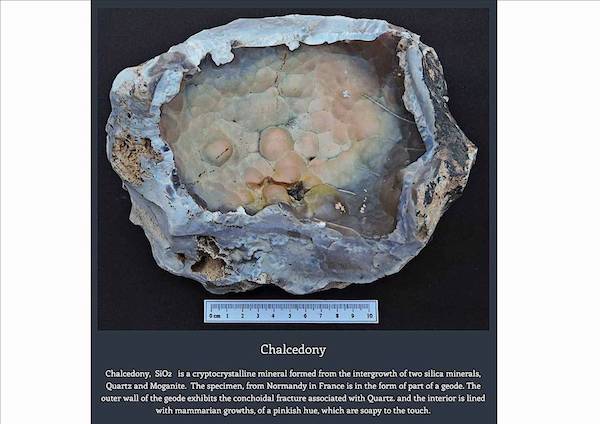
The building blocks of these minerals is the silica tetrahedron, a combination of four oxygen atoms and one silicon atom. These silica tetrahedral units can share oxygen atoms and be linked in a variety of ways, which results in different structures
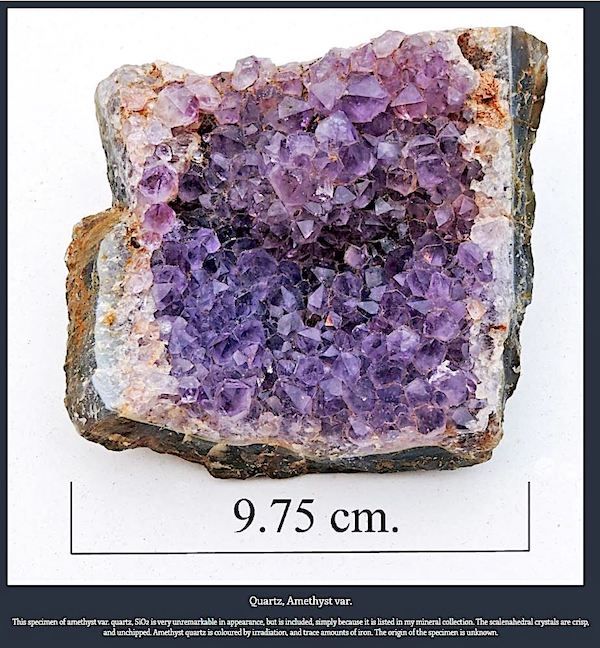
Quartz is composed of pure silica, SiO2 with the tetrahedra arranged in a three-dimensional framework. It is one of the most commonest minerals on earth. It can be found in many geological environments and is a constituent of many rocks. Quartz occurs in either a crystalline or cryptocrystalline form. The crystalline forms of quartz occur as distinct crystals for example amethyst, citrine and smokey quartz, whereas cryptocrystalline quartz is composed of inter-grown aggregates of microscopic or submicroscopic quartz crystals for example agate and onyx. The cryptocrystalline form of quartz may be divided into two general classes i.e. fibrous (eg. agate) and granular (eg.jasper)
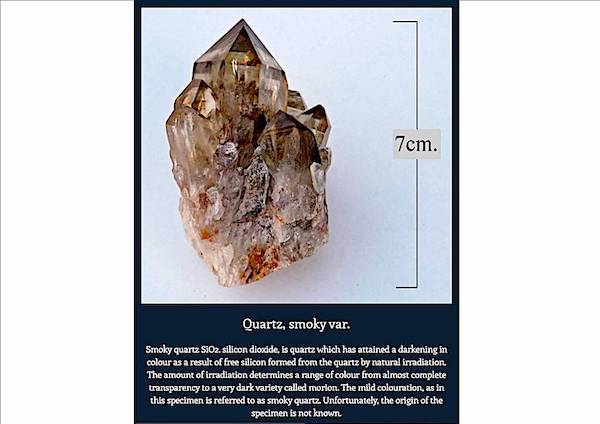
Pure quartz is usually clear or milky in colour but the presence of other elements in the lattice structure or structural change produces a myriad of colours. For example amethyst (violet/purple) is due to the presence of iron within the lattice; rose quartz due to the presence of titanium; smokey quartz due to radiation damage.
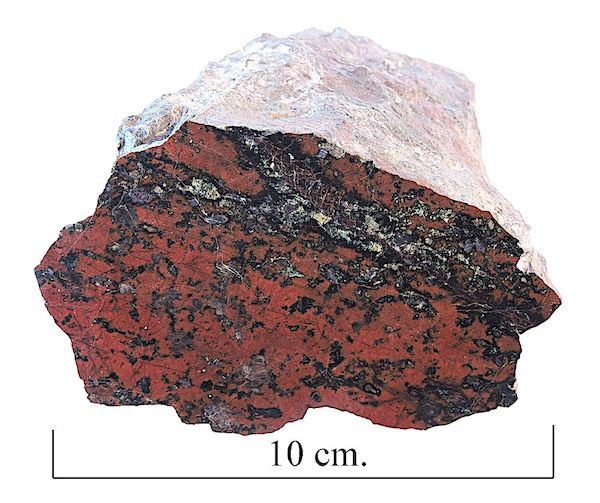
Jasper, Mookaite var.
Cryptocrystalline quartz is coloured similarly. For example agate which is characterised by concentric banding of colours is formed by silica-rich groundwater entering a void in a rock eventually forming a thin layer of chalcedony. This is then repeated over time. The differing colours are due to the presence of different impurities in each successive inflow of silica-rich groundwater. The most frequent impurities being iron oxide (red, brown or yellow); manganese oxide (purple or pink); chlorite (green); hematite (black).
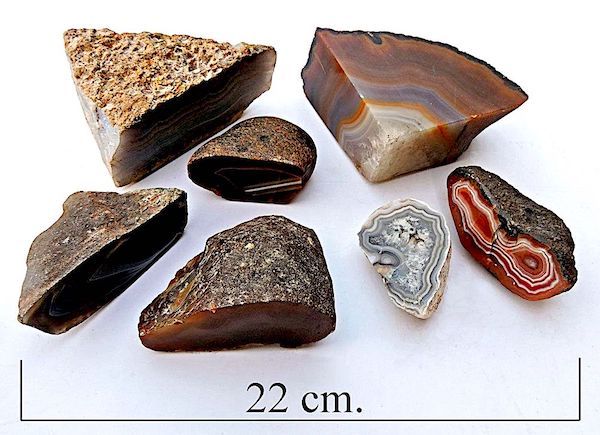
Australian agates.
Bill also explained some of the uses that silica can be put to both from the past and newer technologies.
The use of quartz dates back to the Palaeolithic where flint was used to make hand axes and scrapers.
In more modern times quartz is used in large quantities as it is an essential ingredient in concrete and mortar. Sandstone and quartzite are used in buildings and crushed in road and rail construction. Further, the properties of quartz means it has a wide variety of uses. Quartz has a hardness of 7 on the Mohs scale and may be used as an abrasive (eg. Glass grinding). It has a high melting point and can be used in the manufacture of refractory products like firebricks. Quartz crystals possess a property known as the piezoelectric effect. In other words it is the appearance of an electrical potential (a voltage) across the sides of a crystal when you subject it to mechanical stress. This for example is used in a quartz watch but there are many other uses in electronics.
A very interesting talk.